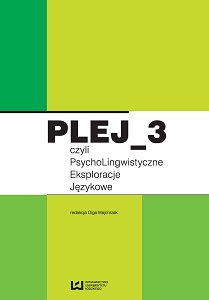Blended learning jako przykład wdrożenia nowoczesnych technologii w proces nauczania języków obcych
Blended Learning as an example of implementation of new
technologies in the teaching of foreign languages
Author(s): Ewelina Basińska
Subject(s): Foreign languages learning
Published by: Wydawnictwo Uniwersytetu Łódzkiego
Keywords: blended learning model;tele-teaching;modern media
Summary/Abstract: "Blended Learning" is about effectively integrating ICTs into course design to enhance the teaching and learning experiences for students and teachers by enabling them to engage in ways that would not normally be available or effective in their usual environment, whether it is primarily face-to-face or distance mode. The mission of "Blended Learning" is to encourage excellence and innovation in language in the form of online software, which houses all the materials and ICT tools that learners need in one central web platform. Some of the core concepts underlying its design are multimodal L2 input exposure (Plieger, 2006), enhanced input, learner-fit content delivery, interaction (human-computer, human-human, and intrapersonal) through computer supported collaborative and individual learning tasks, as well as a more human-like dimension for positive and corrective feedback. This paper describes the elements of the b-learning model and issues connected with its implementation. "Blended Learning’s" potential for developing skills in a foreign language is examined in the light of academic literature as well as the author’s personal teaching experience and observation.
Book: PLEJ_3 czyli PsychoLingwistyczne Eksploracje Językowe
- Page Range: 55-72
- Page Count: 18
- Publication Year: 2014
- Language: English
- Content File-PDF

